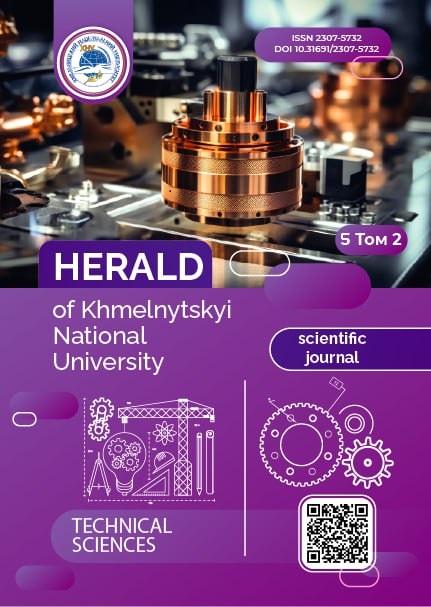ANALYSIS AND SYSTEMATIZATION OF SMART TEXTILES DATAFOR THE DEVELOPMENT OF DANCE CLOTHING USING CONDUCTIVE THREAD
DOI:
https://doi.org/10.31891/2307-5732-2025-357-100Keywords:
smart clothing, electronic textiles, conductive threads, textile sensors, wearable technology, biometric monitoring, flexible electronics, databaseAbstract
This article presents a comprehensive analysis of 43 scientific publications dedicated to electronic textiles. The findings reveal that 23.26% of the studies focus on the development of conductive threads, 20.93% examine the structural parameters of embroidery, and 18.6% address health monitoring systems. A further 11.63% of publications each consider the durability of conductive properties under external influences and power supply solutions. Less explored areas include heating elements (4.65%), anti-vibration gloves, 3D printing, stage costumes, and case studies of smart clothing samples (2.33% each).
A content analysis of online resources and social media demonstrated that 51.85% of search results for the keywords “smart clothing” and “conductive thread” direct users to online stores, while 48.15% lead to informational resources. On social platforms, 72.22% of videos are dedicated to dance costumes with LED elements, whereas 27.78% demonstrate manual techniques for connecting threads with LEDs. On Instagram, a wide variety of visual content was identified: garments with light effects (52%), detachable illuminated wings (8%), and fabrics with thermoactive shape-changing properties (6%). Additionally, around 2% of posts present materials responsive to light, ultraviolet (UV), temperature, and movement.
Within scientific publications, the most frequently cited conductive thread is Silver-tech (AMANN, Germany) – 21.87%, followed by Madeira (UK) – 15.63%. Shieldex and Bekinox are referenced in 6.25% of cases each, while Soitex, Qingdao Hengtong, and Marktek Inc. (USA) are each mentioned in 3.12% of publications. The selection of Silver-tech for further research is justified by its widespread use in academic studies and its availability on the Ukrainian market. The analysis also revealed an informational gap between academic research and the practical promotion of knowledge, underscoring the need for systematization to support the effective design of stage-oriented smart clothing.
To address this, a dedicated database of informational resources on intelligent textiles has been developed. It classifies and consolidates data from diverse sources and is designed for integration into the educational process of students specializing in “Light Industry Technologies.” Serving as a visual and analytical tool, the database bridges scientific theory and commercial practice, enabling students to develop analytical skills, design their own projects, and justify material and technology choices based on structured information. As an open resource, it can be continuously updated, forming a foundation for decision-support systems in smart clothing design. Its application in both research and teaching provides a basis for developing practical guidelines for stage costume design with integrated light effects.
Downloads
Published
Issue
Section
License
Copyright (c) 2025 ОКСАНА ХАСАНОВА, ОКСАНА ЗАХАРКЕВИЧ (Автор)

This work is licensed under a Creative Commons Attribution 4.0 International License.

